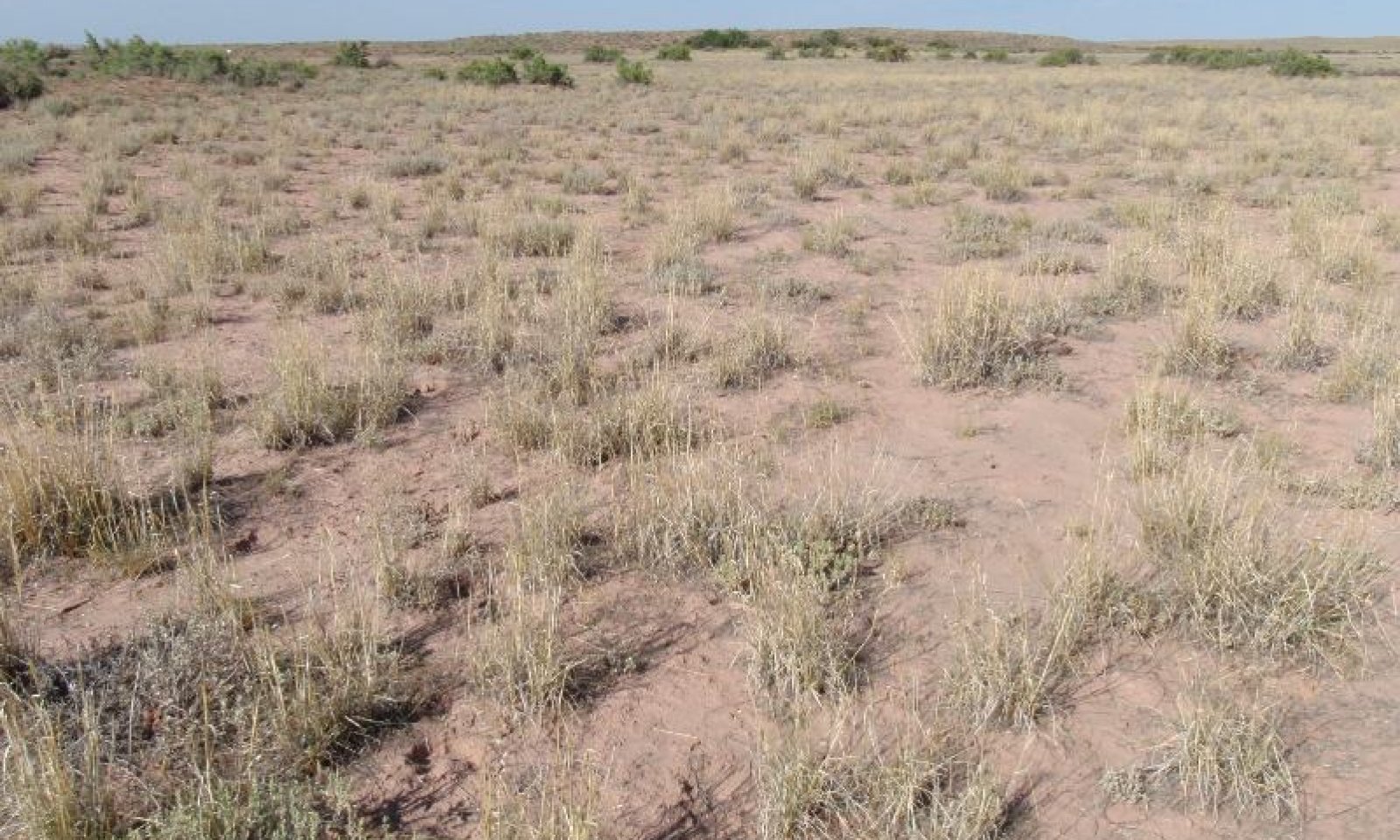
Clay Loam Terrace 6-10" p.z. Sodic
Scenario model
Current ecosystem state
Select a state
Management practices/drivers
Select a transition or restoration pathway
- Transition T1A More details
- Transition T1B More details
- Transition T2A More details
- Restoration pathway R3A More details
-
No transition or restoration pathway between the selected states has been described
Target ecosystem state
Select a state
Description
The reference state represents the plant communities and ecological dynamics of the Clay Loam Terrace, Sodic site. The soil has a moderate amount of exchangeable sodium that heavily influences the kinds and amounts of plant species that will grow on the site. The reference state is generally dominated by alkali sacaton, James' galleta and mound saltbush. In the original plant community there is a predominance of warm season grasses with a mixture of large shrubs and half shrubs.
The reference state is self sustaining and resistant to change due to high resistance to natural disturbances and high resilience following natural disturbances. When natural disturbances occur, the rate of recovery is variable due to disturbance intensity. Plant species most likely to invade or increase on this site when it deteriorates are mound saltbush, black greasewood, and annuals. Once invasive plants establish, return to the reference state may not be possible.
Submodel
Description
This state has plant communities that reflect a well-managed area after the introduction of livestock and non-native annual species. While not the Reference State, this state reflects the best current potential. Annuals, native and non-native, can make up to 20 percent of the total plant composition. Annuals are well established, but do not dominate the understory canopy.
Submodel
State 3
Shrub Dominated




Description
This state is characterized by a dominance of shrub canopy with a small amount of herbaceous cover. Bare ground is typically over 75 percent, but ranges from 65 to 90 percent with basal cover averaging 1 to 5 percent for all vegetation. Perennial grasses may not be present or only present in ocassional scattered clumps.
Submodel
Mechanism
Drought, extended periods with winter dominated moisture patterns, loss of the natural fire frequency, and unmanaged grazing can reduce the perennial grasses on the site and allow woody species to increase.
Unmanaged grazing can be described here as: Season-long grazing providing little rest and recovery for preferred grazed plants during critical growing periods, coupled with high utilization.
Mechanism
Season-long grazing providing little rest and recovery for preferred grazed plants during critical growing periods, coupled with high utilization.
Model keys
Briefcase
Add ecological sites and Major Land Resource Areas to your briefcase by clicking on the briefcase (![]() ) icon wherever it occurs. Drag and drop items to reorder. Cookies are used to store briefcase items between browsing sessions. Because of this, the number of items that can be added to your briefcase is limited, and briefcase items added on one device and browser cannot be accessed from another device or browser. Users who do not wish to place cookies on their devices should not use the briefcase tool. Briefcase cookies serve no other purpose than described here and are deleted whenever browsing history is cleared.
) icon wherever it occurs. Drag and drop items to reorder. Cookies are used to store briefcase items between browsing sessions. Because of this, the number of items that can be added to your briefcase is limited, and briefcase items added on one device and browser cannot be accessed from another device or browser. Users who do not wish to place cookies on their devices should not use the briefcase tool. Briefcase cookies serve no other purpose than described here and are deleted whenever browsing history is cleared.
Ecological sites
Major Land Resource Areas
The Ecosystem Dynamics Interpretive Tool is an information system framework developed by the USDA-ARS Jornada Experimental Range, USDA Natural Resources Conservation Service, and New Mexico State University.



